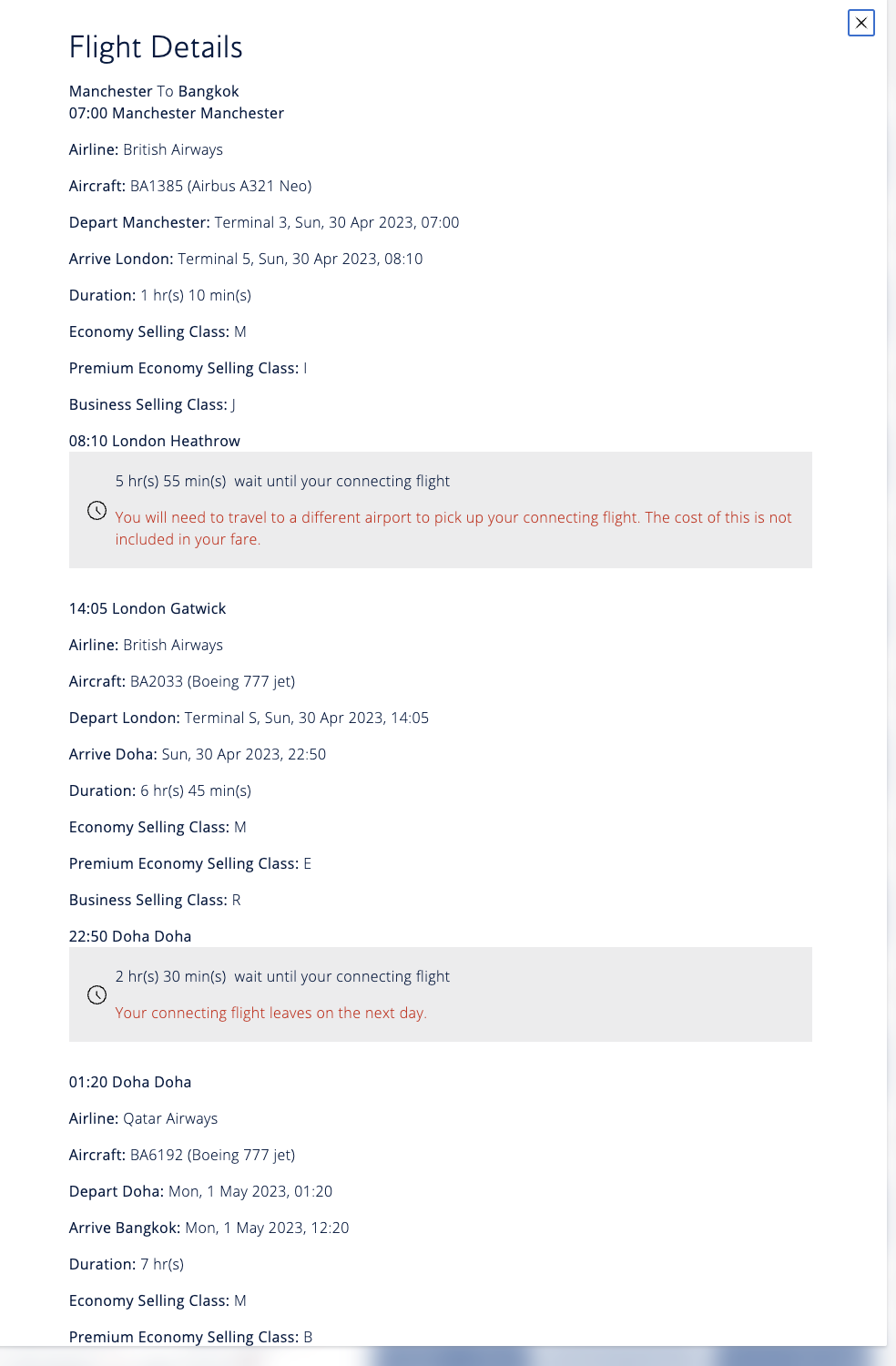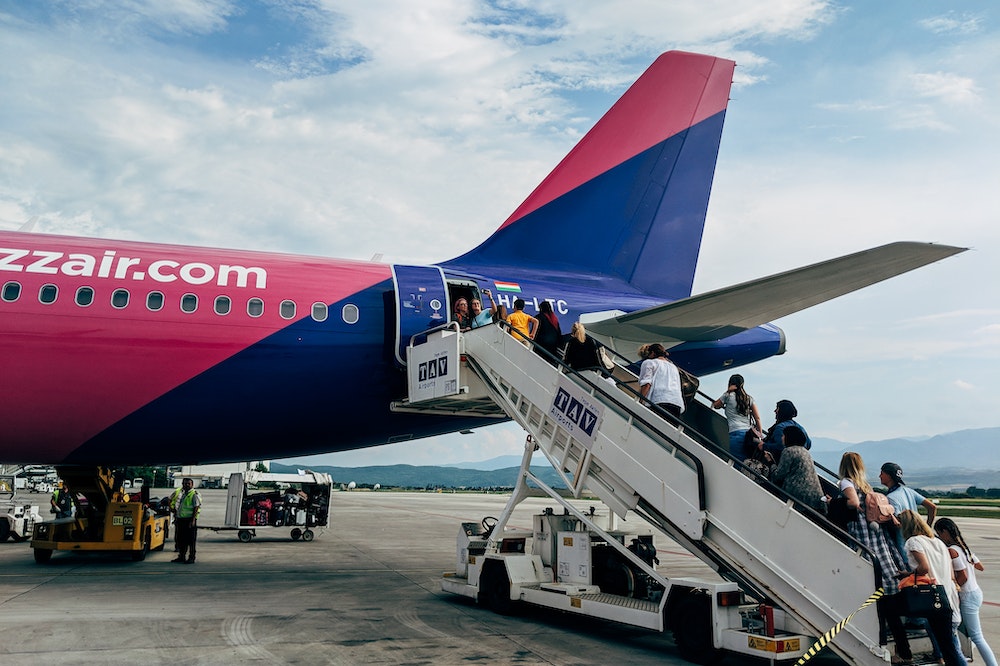Connecting flights at different airports: Changing airports
You are having connecting flights at different airports.
That means you’ll be changing airports in between the flights.
If so, then it is important to be aware of the potential challenges and pitfalls that could arise. Navigating different airports can be tricky, especially if you are unfamiliar with the airport layout and the city’s transport system. In this article, we will discuss how to handle the process of changing airports when taking connecting flights and provide tips on how to ensure your travels go as smoothly as possible.

Connecting flights at different airports: Changing airports
Usually, connecting flights don’t involve changing of airports.
If you have booked a journey involving a change of airport, most probably, it’s a self-transfer flight. This is how this normally works — airline-protected connecting flights in by far most situations arrive and leave from the same airport. However, there are some exceptions.
For example, British Airways sells protected connecting flights for which changing airports is necessary. It’s not very common, but you may see such options when booking connecting flights with British Airways, and sometimes also with other airlines.
If you see a connecting flight which requires an airport change, it will work more or less the same as a self-transfer flight. You will need to take into account the same things as you would when traveling on a self transfer. However you still will be protected in case you miss your connection due to flight delays and cancellations.
Generally, connecting flights at different airports are very rare.
British Airways example:

What should you take into account when booking a flight with airport change?
Changing airports can be a stressful experience for many travelers.
To help ease your worries, here are some things you should take into account when booking such a journey. Read through this list and you’ll be better prepared for that!
1. Choose another flight
It’s always better to avoid the flights that require airport change.
If possible, it is best to book a flight that doesn't involve changing airports. In a lot of situations change of airports is unnecessary problem that you should better avoid.
This is especially true if the price difference is insignificant.
2. Know the location of the next airport
Knowing the location of the new airport is very important.
If the airport is very far, you might not make it in time for your next flight. It is very important to leave enough time for travel. Also don’t forget about possible traffic jams on the way. First, you will need time to get through the first airport, then — travel to the second airport, and then go through the airport procedures at the second airport.
3. Research transport options
How are you going to travel between airports?
If you decide to book a flight which requires airport change, make sure you find out about the different transit options available between airports.
Check if there is a train or metro between the airports, or at least half of the way. In most situations trains are the fastest mode of transport, as they help to avoid traffic jams. Trains also are the most convenient way of travelling between airports. Unfortunately, train travel can be expensive, especially in Western Europe.
If there are no trains, see if there are other options such as local buses, ride-hailing services, and shuttle buses. Quite often there are shuttle buses between airports. For example, in Barcelona if you want to travel from Barcelona airport to Girona airport, you can take a Sagales bus. Or, in London, if you want to travel between Heathrow and Luton Airport, take a National Express coach. These are just two of many examples.
One more thing to remember — try to book your tickets in advance. This will help avoid confusion on the day of travel. Also, tickets may be get sold out when you arrive.
4. Leave yourself enough time
Leave enough time not only for navigating traffic, but also for immigration and security. Many people forget about this.
Before travelling to another airport, you will need to collect your bags and go through passport control. Then you will need to find transportation to the other airport. If you have already booked transport tickets, you will need to locate the stop. All of it takes time. Plus, take into account that there might be traffic jams, depending on the time of the day.
In addition to that, once you arrive to the second airport, you need some time for checking in for the next flight, baggage drop and security check before proceeding to your gate.
5. Consider costs
Are you travelling this way in order to save money on travel?
Keep in mind that most likely there will be additional costs associated with changing airports. Find out the cost of transportation between the two airports. Now, compare the total price with price of other flights to see if it is still less expensive and worth doing it.
If it’s not worth it, book another flight, a flight that doesn’t require you to change airport. Because, as already mentioned, change of airports can be time and energy-consuming.
6. Find out if you need a visa for transit
Do you need a visa for your layover?
If you will be switching airports during your trip, you must be aware that you will be entering the transit country, and therefore may be required to apply for a visa to enter that country if it is necessary. For your own convenience, we recommend you to avoid such connecting flights, even if they are cheaper.
Don’t forget to count in the visa costs!

Missing connecting flight due to delay, cancellation, etc.
If you don’t plan your trip carefully, you might miss your connection.
If you don’t allow yourself enough time, you can easily miss your next flight. If your previous flight is delayed or cancelled, even just a little bit, and you miss connection, you won't get any help from the airline, unless it’s an airline-protected connecting flight. Most of the flights that involve change of airports aren’t airline-protected connecting flights — they are self-transfer flights.
Airline-protected connecting flights at different airports are uncommon.
In case of self-transfer flight, no airline is responsible for this connection — you are transiting yourself, and take full responsibility for that. You check in for every flight yourself. You recheck baggage yourself. If you miss one of your flights for whatever reason, you pay for new flight yourself. However, if your first flight is delayed for 3+ hours due to the airline’s fault or cancelled last-minute due to the airline’s fault, you might be entitled to flight cancellation or flight delay compensation. In addition to that, you have a right to care from the airline.
The compensation and right to care part applies to flights to and from Europe. You don't have to be European to have these rights.
Check your compensation online!
By Europe and EU we mean all EU Member States, the United Kingdom (UK), Guadeloupe, French Guiana, Martinique, Reunion, Mayotte, Saint Martin, the Azores, Madeira, the Canary Islands, Iceland, Norway, and Switzerland.
Featured photo by Markus Spiske